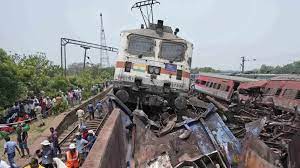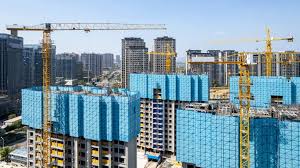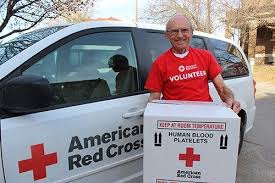In the flipped and mangled wreckage of the two passenger trains that derailed in eastern India, killing more than 280 people and injuring hundreds more in one of the bloodiest rail accidents to hit the nation in decades, rescuers were unable to locate any more survivors, authorities said on Saturday.
Rescue workers clambered atop the derailed trains to use cutting torches to smash open doors and windows as chaotic scenes broke out after the incident on Friday night about 220 kilometers (137 miles) southwest of Kolkata.
The number of fatalities kept going up all night. While villagers and rescuers struggled to free the hundreds of people trapped in the rail cars under the twisted metal and broken glass, scores of bodies covered in white sheets lay on the ground next to the rails. Army troops and helicopters from the air force joined the effort.
A press photographer witnessed rescuers struggling to recover the dead while working in the intense heat with temperatures reaching up to 35 degrees Celsius (96 degrees Fahrenheit).
“We were able to rescue the survivors around 10 p.m. on Friday. Following that, gathering up dead bodies was the priority, according to Sudhanshu Sarangi, director of the fire and rescue department for the state of Odisha. “This is terrible in the extreme. In my profession, I have never witnessed anything like this.
According to him, at least 280 dead bodies were found overnight and into the early hours of Saturday. There were about 900 injuries, and the cause was being looked into.
The incident happened as Prime Minister Narendra Modi was concentrating on modernizing the British colonial-era train network in India, which has over 1.42 billion people and has overtaken China as the world’s most populated nation. Several hundred incidents happen annually on India’s railways, the world’s largest train network with single management, despite government efforts to increase rail safety.
Modi flew to the disaster site and stayed for 30 minutes to look at the relief efforts and speak with rescue workers. On the phone, he was observed providing directions to agents in New Delhi.
Later, he went to a hospital, where he moved from bed to bed in a ward asking doctors about the care being given to the injured and speaking with some of them.
According to Modi, the situation was tragic and he could feel the suffering of the accident victims. He declared that the government would make every effort to assist them and would severely punish those proven to be at fault.
On Saturday, Modi was scheduled to launch a high-speed train that runs between Mumbai and Goa and is fitted with a collision prevention system. The mishap on Friday caused the event to be postponed. That mechanism wasn’t in the trains that derailed.
The rescue efforts were almost over, according to Amitabh Sharma, a Railroad Ministry spokeswoman. In order to fix the track and resume train operations, rail authorities will begin clearing the debris, he said.
According to P.K. Jena, the state’s senior administrative officer, about 200 of the severely injured patients were sent to specialty hospitals in different cities in Odisha. He said, “Another 200 were discharged after receiving medical attention, and the remainder were being treated in neighborhood hospitals.” Numerous others also came to give blood.
“Identifying the bodies is currently a challenge. The bodies are turned over following autopsy wherever the kin can present proof. If not identified, perhaps we will need to use other techniques like a DNA test,” he said.
According to Sharma, ten to twelve coaches of one train derailed, and Sharma claims that some of the wrecked coaches dropped their parts onto a neighboring track. According to him, a passenger train traveling in the opposite way struck the debris and up to three of its coaches derailed as a result.
The Press Trust of India stated that a third freight train was also involved, although railroad authorities did not immediately confirm this. According to PTI, some of the derailed passenger coaches collided with freight train wagons.
Two train cars were squeezed together by the impact of the accident, which delayed the rescue effort, according to Jena.
According to officials, 1,200 rescuers worked through the night with 115 ambulances, 50 buses, and 45 mobile medical units. In Odisha, Saturday has been designated as a day of sorrow.
Villagers claimed they heard a loud noise produced by the railway coaches leaving the rails and hurried to the scene to evacuate people.
“The locals truly went above and beyond to assist us. They not only assisted in getting people out but also fetched us water and our items, according to a survivor named Rupam Banerjee, who was quoted by PTI.
Vandana Kaleda, a passenger, reported that when her carriage severely shook and went off the tracks, people were tumbling on top of each other.
“The train immediately tipped as I exited the restroom. I became unsteady. Everything turned upside down. I was astonished and perplexed when people began to collapse on top of one another. My mind just halted,” she claimed.
Another survivor, who wished to remain anonymous, claimed that the impact woke him up while he was asleep. He claimed to have observed other people who had damaged faces and shattered limbs.
According to officials, the collision included two trains: the Howrah Superfast Express from Bengaluru, Karnataka, to Howrah, and the Coromandel Express from Howrah, West Bengal, to Chennai, Tamil Nadu. It was unclear right away which train derailed first.
India’s railway minister, Ashwini Vaishnaw, promised a thorough investigation. The political opposition demanded Vaishnaw’s resignation and lambasted the administration.
One of the deadliest train accidents in India occurred in August 1995 when two trains crashed close to New Delhi, killing 358 people.
Between the towns of Indore and Patna, a passenger train derailed in 2016, killing 146 people.
Human mistakes or out-of-date signaling equipment are considered the main causes of train accidents.
Every day, 14,000 trains carrying more than 12 million passengers traverse India’s 64,000 kilometers (40,000 miles) of track.


















